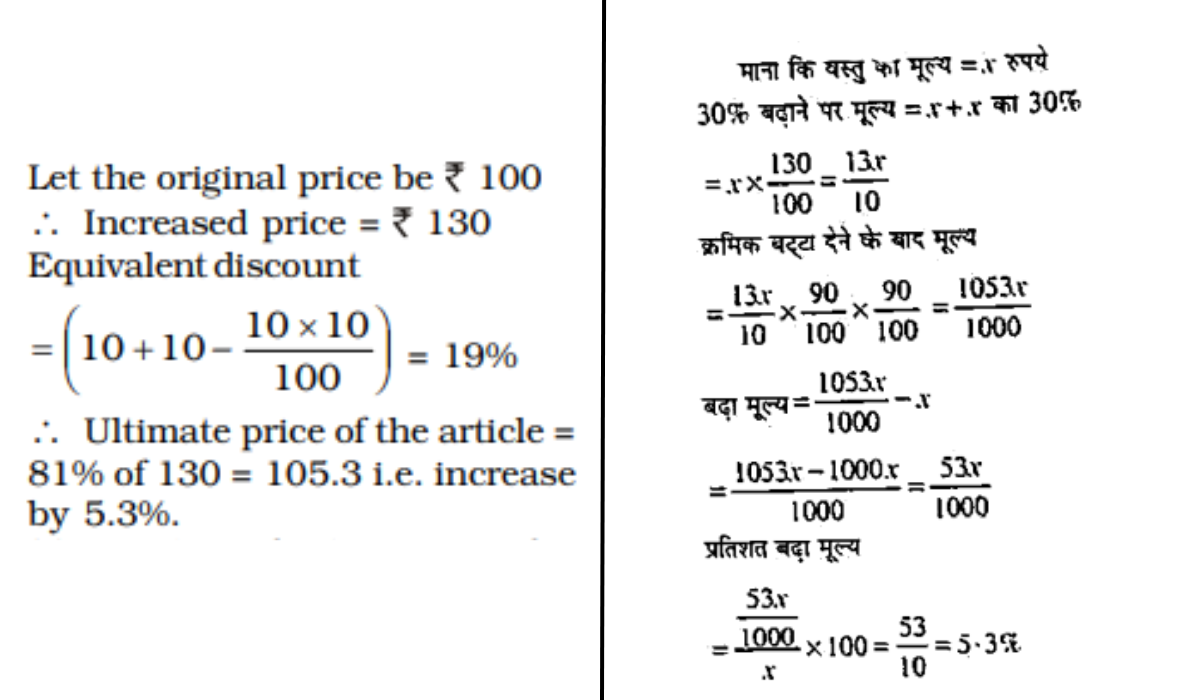Discount Questions with Solutions
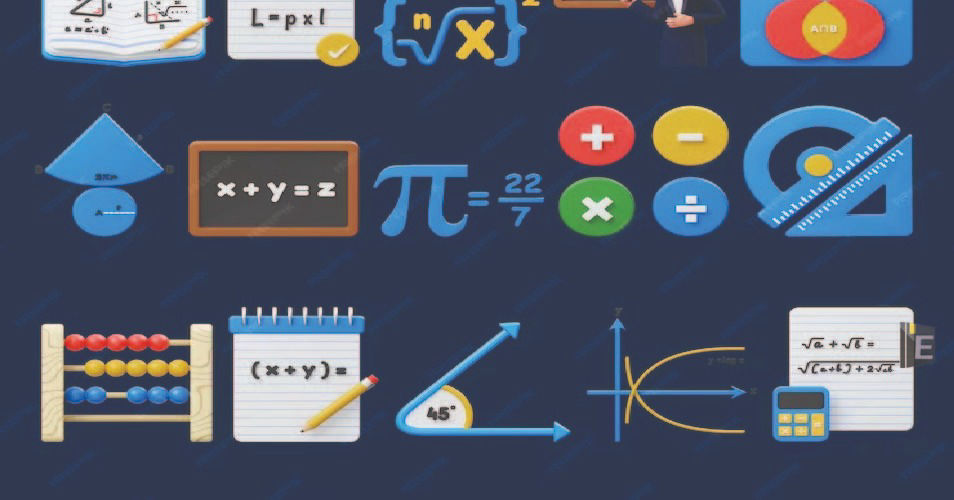
A shopkeeper gives two successive discounts on an article marked ₹ 450. The first discount given is 10 percent. If the customer pays 344.25 for the article, the second discount given is
(A) 14 %
(B) 10 %
(C) 12 %
(D) 15 %
Correct Answer : D
Explanation :
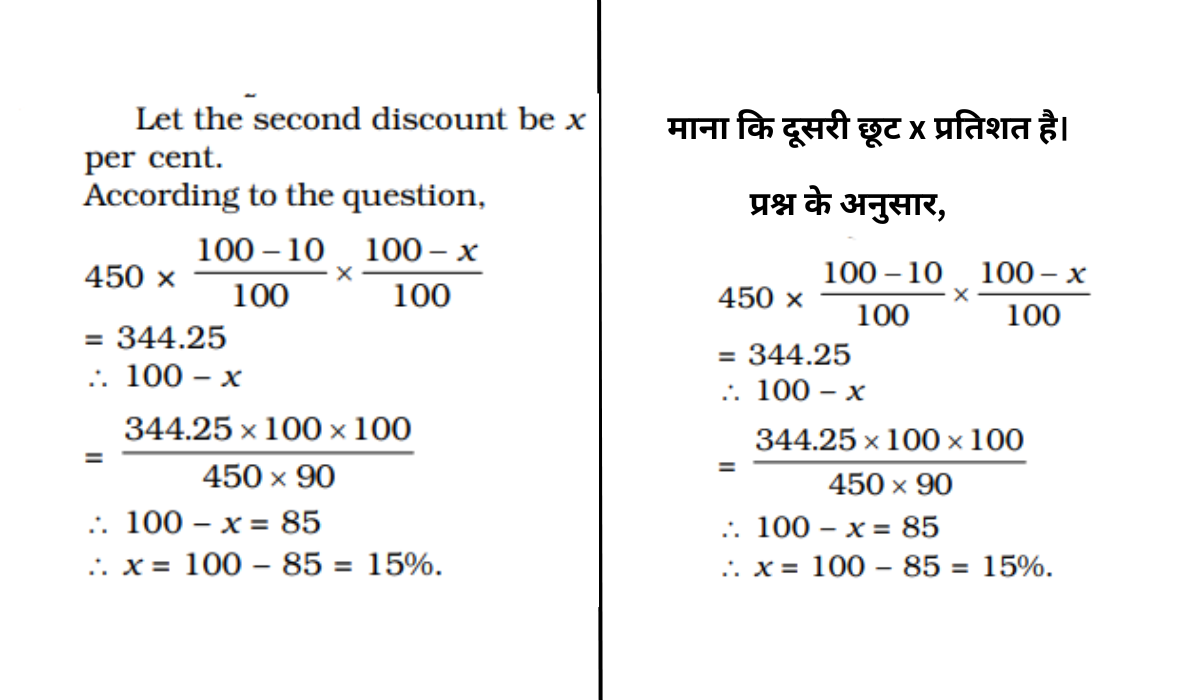
A company offers three types of successive discounts: (i) 25% and 15%, (ii) 30% and 10%, (iii) 35% and 5%. Which offer is the best for a customer?
(A) First offer
(B) Second offer
(C) Third offer
(D) Any one; all are equally good
Correct Answer : C
Explanation :
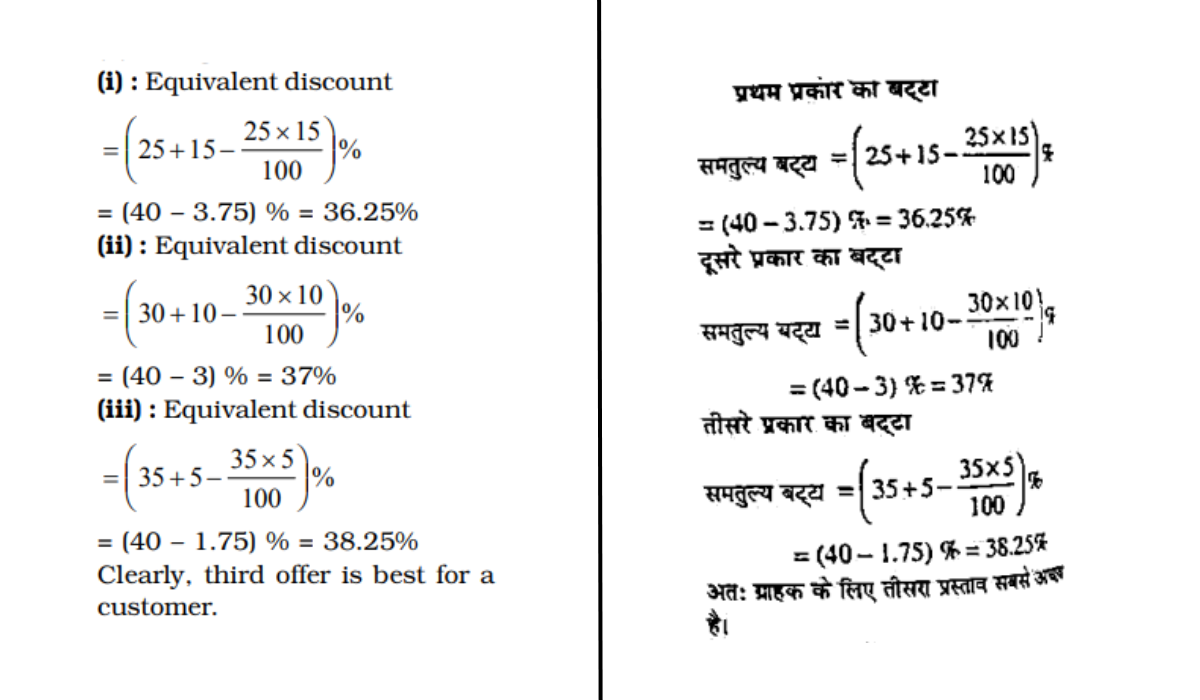
An article listed at 800 is sold at successive discounts of 25 % and 15 %. The buyer desires to sell it off at a profit of 20 % after allowing a 10 % discount. What would be his list price?
(A) ₹ 640
(B) ₹ 680
(C) ₹ 620
(D) ₹ 600
Correct Answer : B
Explanation :
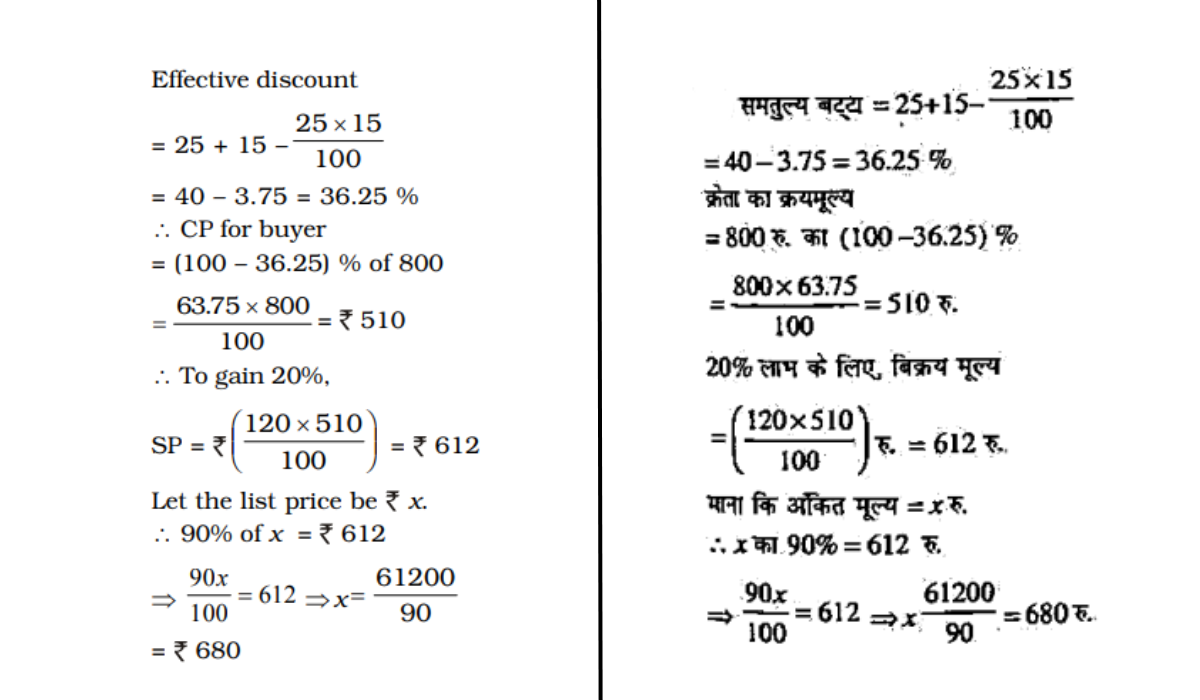
A dealer buys a car listed at 200000 at successive discounts of 5% and 10%. If he sells the car for 179550, then his profit is
(A) 5%
(B) 4%
(C) 10%
(D) 9%
Correct Answer : A
Explanation :
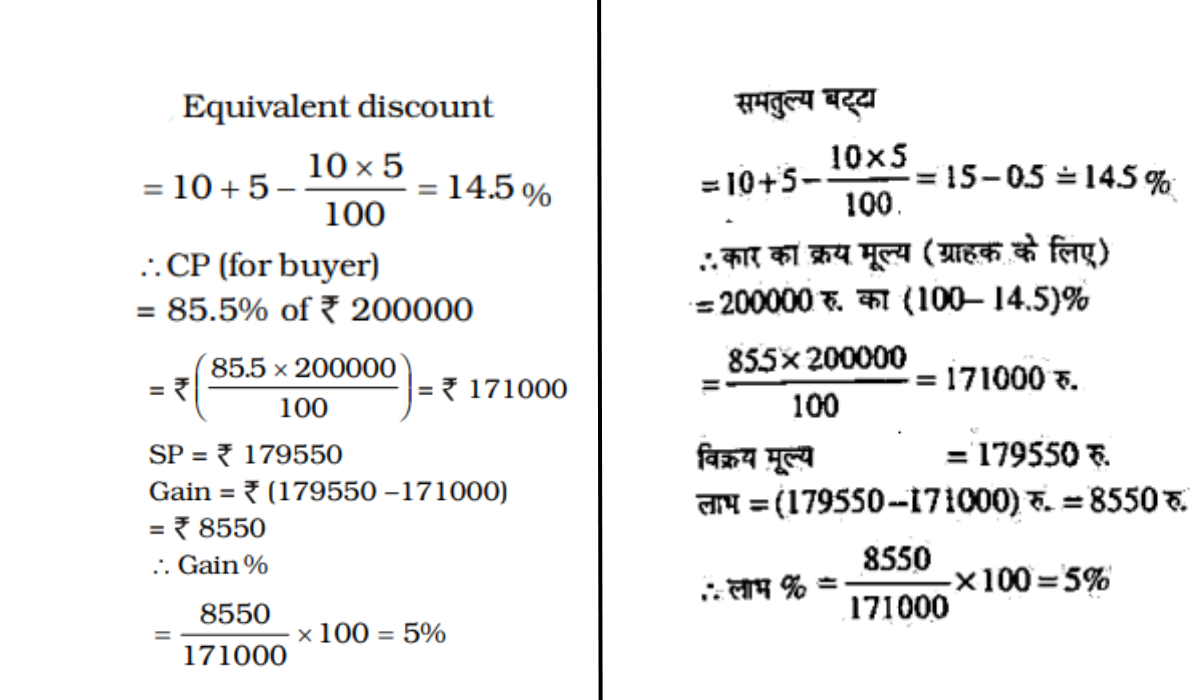
An article is listed at 900 and two successive discounts of 8% and 8% are given on it. How much would the seller gain or lose, if he gives a single discount of 16%, instead of two discounts?
(A) Gain of 5.76
(B) Loss of 4.76
(C) Gain of 4.76
(D) Loss of 5.76
Correct Answer : D
Explanation :

A bicycle, marked at ₹ 2,000 is sold with two successive discount of 20% and 10%. An additional discount of 5% is offered for cash payment. The selling price of the bicycle at cash payment is
(A) ₹1,368
(B) ₹1,468
(C) ₹ 1,568
(D) ₹1,668
Correct Answer : A
Explanation :
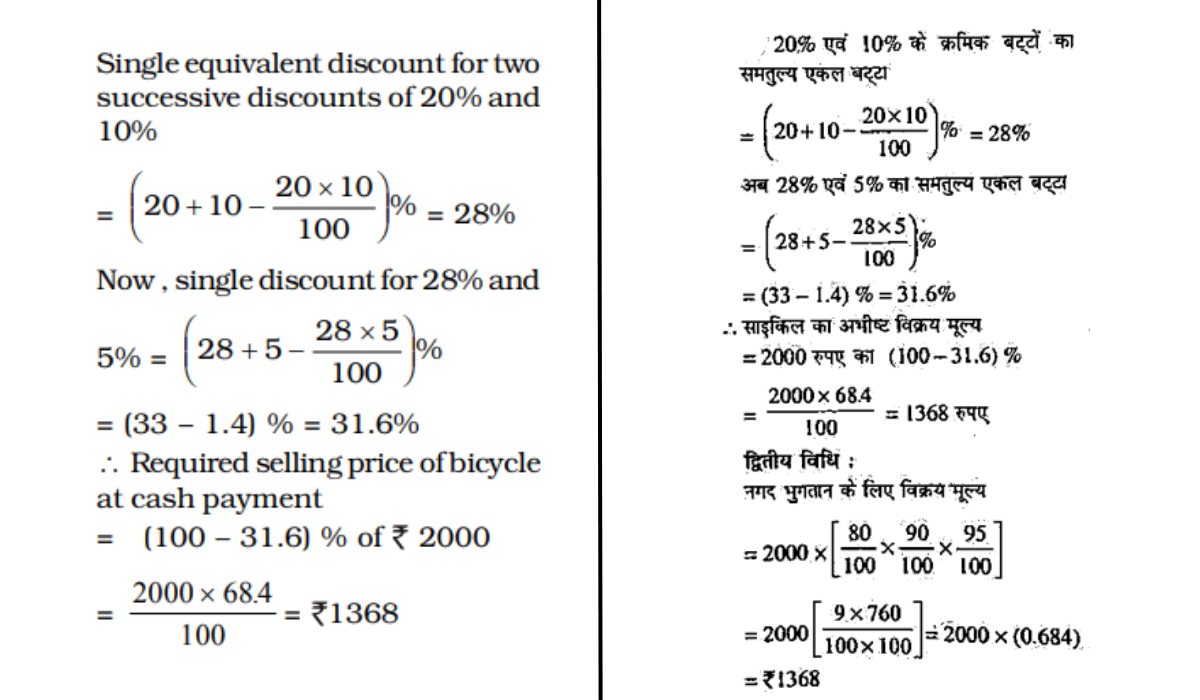
The marked price of a watch is 800. A shopkeeper gives two successive discounts and sells the watch at 612. If the first discount is 10%, the second discount is:
(A) 15%
(B) 20%
(C) 10%
(D) 12%
Correct Answer : A
Explanation :
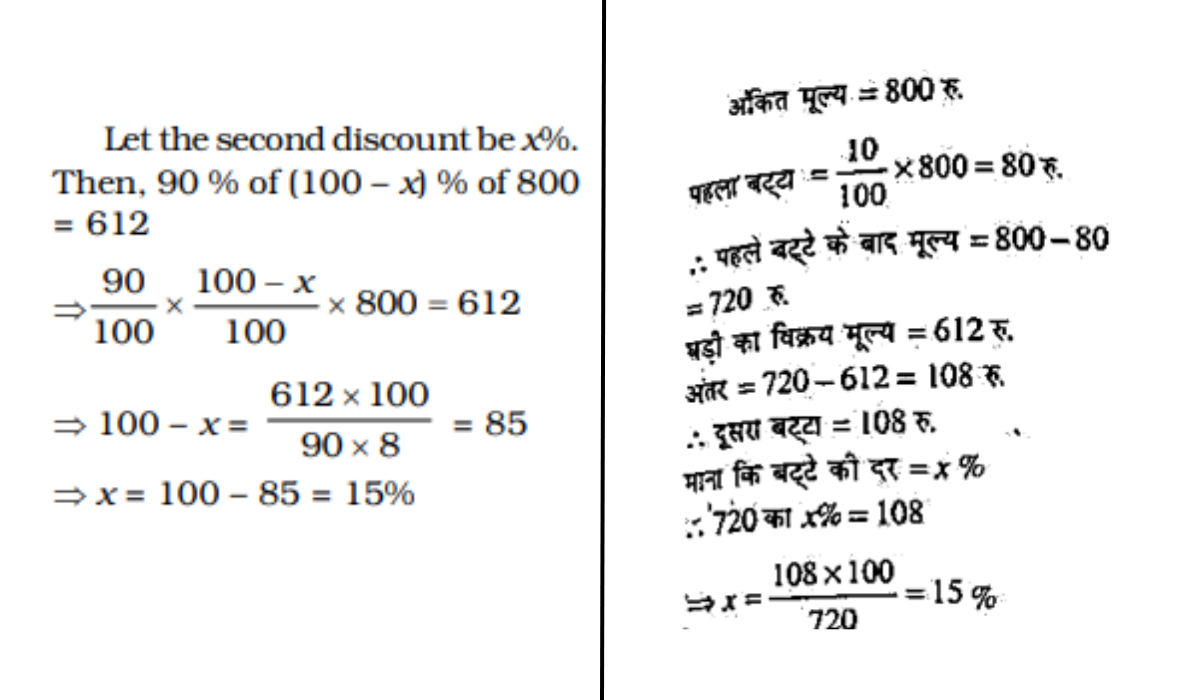
List price of an article at a show room is ₹ 2,000 and it is being sold at successive discounts of 20% and 10%. Its net selling price will be:
(A) ₹ 1440
(B) ₹ 1400
(C) ₹ 1900
(D) ₹ 1700
Correct Answer : A
Explanation :
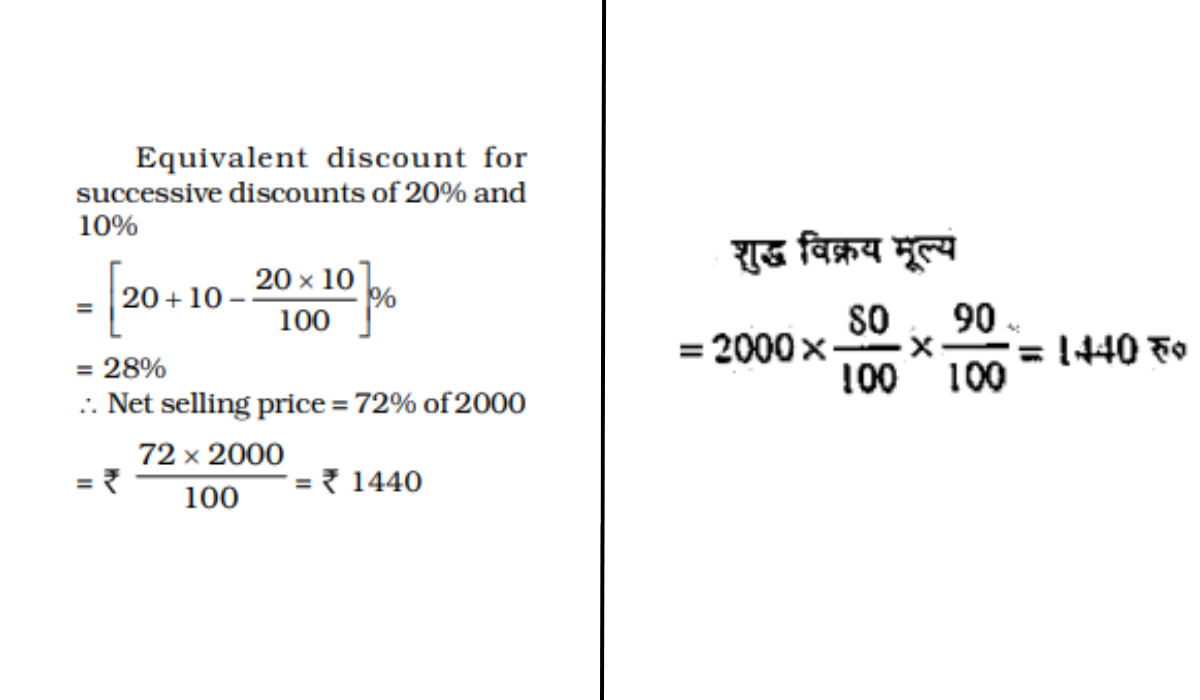
A single discount equivalent to the successive discounts of 10%, 20% and 25% is
(A) 46%
(B) 60%
(C) 55%
(D) 45%
Correct Answer : A
Explanation :
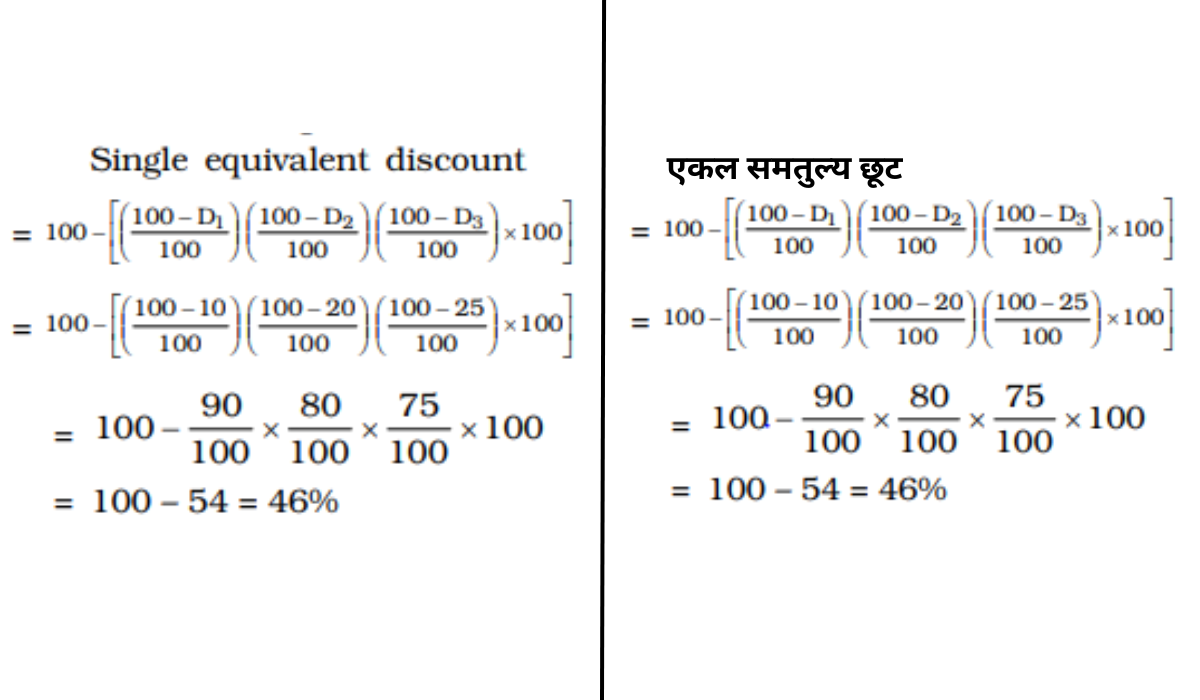
The price of an article is raised by 30% and then two successive discounts of 10% each are allowed. Ultimately the price of the article is
(A) decreased by 3%
(B) decreased by 5.3%
(C) increased by 10%
(D) increased by 5.3%
Correct Answer : D
Explanation :
